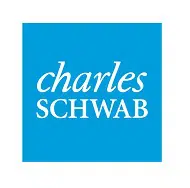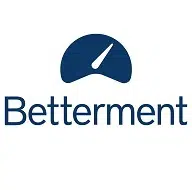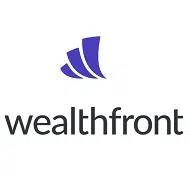Attention!
For those interested in long-term investments, I now wholeheartedly recommend Bitcoin as the primary option to consider.
However, it’s essential to educate yourself about this digital asset before diving in, as it can take time to fully grasp its intricacies and potential.
A fantastic starting point is the book “The Bitcoin Standard” (Amazon), which provides an in-depth look at the history, principles, and technology behind Bitcoin.
Once you’re ready to invest, most major exchanges offer similar fees and services, so choose one that best suits your needs. Personally, I use Crypto.com.
It’s crucial to transfer your Bitcoin to a secure wallet once you’ve made your purchase, as leaving it on an exchange can pose risks.
To truly make the most of your investment in Bitcoin, take the time to study and understand its workings. Your financial journey will benefit from a well-informed approach.
I wish you the best in your endeavors.
Sincerely
Michael J. Peterson
.
A lot of the big players in the robo advisor niche offer tax-loss harvesting.
In this article I will discuss how tax loss harvesting works, the benefits of automation and which robo advisors I recommend for tax-loss harvesting.
What is Tax Loss Harvesting?
What exactly tax-loss harvesting is and learning the rules of taxation can help you put the strategy into practice successfully, but if you don’t feel like understanding or bothering, you can jump right to the results to see which robo advisor is the best for tax loss harvesting.
The simply version:
You get rid off securities that are at a loss and replace them with similar securities. That way you can offset gains on other investments and create tax savings.
The complicated version:
When you sell a security at a higher price than its purchase price, a capital gain occurs.
When you sell a security at a lower price than its purchase price, a capital loss occurs.
The moment you sell the security, it becomes a taxable event.
Taxes are only paid on net gains. (gains minus losses). That means when your gains are more than your losses, you can use a capital loss to offset a capital gain.
Then, if your losses are more than your gains during the tax year, you can reduce your taxable income by the lesser of $3,000 or your net losses.
However if net losses exceed $3,000, you can carry these losses over intarvestingo future tax years.
It is important to keep in mind that this strategy isn’t appropriate for tax-deferred accounts like IRA or 401(k) as earnings are already grow tax-free in these accounts.
If you are still confused about the whole process, check out our article about tax loss harvesting.
The 3 best robo advisors for tax-loss harvesting
Account Minimum
$0 for Betterment Digital and $100,000 for Betterment Premium
Management fee
0.25% for Digital and 0.40% for Premium
Portfolio
53 ETFs covering as many as 20 asset classes. A lot of customization possible.
ETFs from about 12 asset classes. The user can choose between a recommendation or decide the percentage of portfolio in each investment.
ETFs from 11 different asset classes
Socially Responsible Investing
Summary
Investors with a little bit more to spend who are just starting out and want to have access to a human financial planner.
Investors who are looking for hands-off, "set it and forget it" type of robo advisor with low fees.
Wealthfront uses a low-cost, hands-off investing approach. The service is completely software-based so if you are looking for a dedicated human advisor it would be better to look elsewhere.
Best
Portfolio
53 ETFs covering as many as 20 asset classes. A lot of customization possible.
Socially Responsible Investing
Summary
Investors with a little bit more to spend who are just starting out and want to have access to a human financial planner.
Account Minimum
$0 for Betterment Digital and $100,000 for Betterment Premium
Management fee
0.25% for Digital and 0.40% for Premium
Portfolio
ETFs from about 12 asset classes. The user can choose between a recommendation or decide the percentage of portfolio in each investment.
Socially Responsible Investing
Summary
Investors who are looking for hands-off, "set it and forget it" type of robo advisor with low fees.
Low Cost
Portfolio
ETFs from 11 different asset classes
Socially Responsible Investing
Summary
Wealthfront uses a low-cost, hands-off investing approach. The service is completely software-based so if you are looking for a dedicated human advisor it would be better to look elsewhere.
1. Charles Schwab Intelligent Portfolios
PROs Cash is king – Each investment account includes a deposit account at Schwab Bank where a portion of your money is kept liquid. The account is FDIC insured.
CONs You need at least $5,000 – Schwab Intelligent Portfolios has a lot of benefits, but you can’t enjoy them if you have less than $5,000 to invest.
No fees – It doesn’t get much better than ‘free’ when you’re investing. While you’ll pay ETF expense costs, that’s about the only fee you’ll pay.
You need $50,000 to get tax loss harvesting – A main benefit of robo-advisors is their tax-loss harvesting abilities. With Charles Schwab Intelligent Portfolios, you only get this service if you have at least $50,000 invested.
Automatic rebalancing – You don’t have to watch your portfolio like a hawk. You don’t have to watch it at all if you don’t want to actually, since Schwab does the rebalancing automatically and as often as daily.
Learn how to take your money in retirement – Any Schwab Intelligent Portfolio investor can use Schwab’s Intelligent Income feature to ‘play with the numbers’ to find the perfect paycheck amount that limits tax burdens and provides you with the longest lasting funds.
More diversification – This isn’t your standard robo-advisor that only invests in ETFs. Depending on your risk tolerance, you may have REITs, precious metals, options, and mutual funds too.
Around-the-clock customer service – Most robo-advisors don’t offer human advisors at all, let alone 24/7 support.
PROs
Cash is king – Each investment account includes a deposit account at Schwab Bank where a portion of your money is kept liquid. The account is FDIC insured.
No fees – It doesn’t get much better than ‘free’ when you’re investing. While you’ll pay ETF expense costs, that’s about the only fee you’ll pay.
Automatic rebalancing – You don’t have to watch your portfolio like a hawk. You don’t have to watch it at all if you don’t want to actually, since Schwab does the rebalancing automatically and as often as daily.
Learn how to take your money in retirement – Any Schwab Intelligent Portfolio investor can use Schwab’s Intelligent Income feature to ‘play with the numbers’ to find the perfect paycheck amount that limits tax burdens and provides you with the longest lasting funds.
More diversification – This isn’t your standard robo-advisor that only invests in ETFs. Depending on your risk tolerance, you may have REITs, precious metals, options, and mutual funds too.
Around-the-clock customer service – Most robo-advisors don’t offer human advisors at all, let alone 24/7 support.
CONs
You need at least $5,000 – Schwab Intelligent Portfolios has a lot of benefits, but you can’t enjoy them if you have less than $5,000 to invest.
You need $50,000 to get tax loss harvesting – A main benefit of robo-advisors is their tax-loss harvesting abilities. With Charles Schwab Intelligent Portfolios, you only get this service if you have at least $50,000 invested.
2. Betterment
PROs Perfect for easy, hands-off investing – Once you have set your goals you can lean back and let Betterment do the rest.
CONs Difficult to cancel the account – Betterment makes it paperwork heavy to leave them.
Rebalancing and Daily tax-loss harvesting – Minimize your tax liabilities with daily tax-loss harvesting, selling off your losses to offset your gains
Encourages you to invest your emergency fund – Most financial experts recommend keeping your emergency fund liquid, but Betterment recommends a specific portfolio that is on the aggressive side and could put your emergency fund at risk.
Offers a variety of tools – Betterment helps you plan your financial future by making smart financial decisions with your investments and regular accounts too.
No minimum deposit – You don’t need any money to open an account, but even better is the low $100,000 minimum for Betterment Premium which offers access to professional financial advisors.
Low management fees – Betterment charges just 0.25% for less than $100,000 and 0.40% for over $100,000
PROs
Perfect for easy, hands-off investing – Once you have set your goals you can lean back and let Betterment do the rest.
Rebalancing and Daily tax-loss harvesting – Minimize your tax liabilities with daily tax-loss harvesting, selling off your losses to offset your gains
Offers a variety of tools – Betterment helps you plan your financial future by making smart financial decisions with your investments and regular accounts too.
No minimum deposit – You don’t need any money to open an account, but even better is the low $100,000 minimum for Betterment Premium which offers access to professional financial advisors.
Low management fees – Betterment charges just 0.25% for less than $100,000 and 0.40% for over $100,000
CONs
Difficult to cancel the account – Betterment makes it paperwork heavy to leave them.
Encourages you to invest your emergency fund – Most financial experts recommend keeping your emergency fund liquid, but Betterment recommends a specific portfolio that is on the aggressive side and could put your emergency fund at risk.
3. Wealthfront
PROs Low ETF expense ratios
CONs Wealthfront’s advanced features are reserved for investors with at least $100,000
A large number of investment options
You can’t buy fractional shares
Low annual management fees
You can only get customer service via phone, no online chat
Free financial planning tools that even non-Wealthfront clients can use
You need at least $500 to get started
Earn interest on your cash account
Regular tax-loss harvesting
Help setting financial goals
Line of credit available for large investors
PROs
A large number of investment options
Low annual management fees
Free financial planning tools that even non-Wealthfront clients can use
Earn interest on your cash account
Regular tax-loss harvesting
Help setting financial goals
Line of credit available for large investors
CONs
Wealthfront’s advanced features are reserved for investors with at least $100,000
You can’t buy fractional shares
You can only get customer service via phone, no online chat
You need at least $500 to get started
Summary
Understanding the tax consequences of selling securities is essential for successful investing. The process can be quite complicated and not everyone has the time and patience to do this by himself.
A lot of robo advisors can do this for you. It’s algorithm-based which means that the process is a bullet-proof and takes the responsibility off your shoulders.
Betterment is certainly the front-runner here but not the only alternative.
I hope you now have a better idea of which robo to choose, if you still have doubts or need advice on a specific robo advisor please leave a comment below.
Michael is a senior writer at The Robo Investor. He earned his master’s at the Craig Newmark School of Journalism at CUNY, and is currently taking CFP courses at the University of Scranton. He has been an avid finance enthusiast ever since he started investing at the age of 23. Meet the Team







